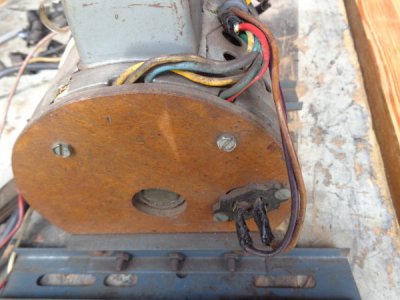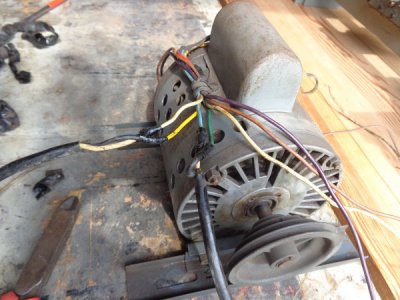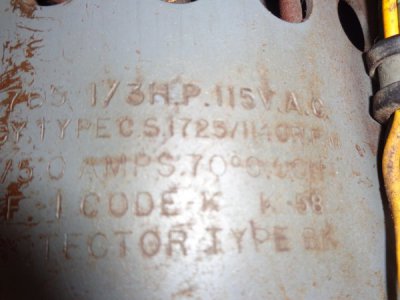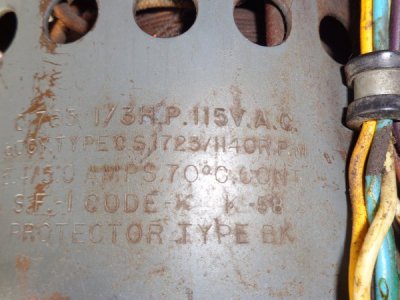bama7,
Unfortunately, no one can tell you that. The three wires going to the AC supply plug should be green for ground, white for Neutral, and Black for Hot. Your photos show three bundles pf wire coming out, with 2 wires, 2 wires and 4 wires. Unless you can find the original wiring diagram and it actually matches the wire colors, you had better take it to someone who knows what they are doing and have them wire the line cord.
Also, one of the photos showing the printing on the side shows "PROTECTOR TYPE BK". As I do not see a red reset push button, that causes me to believe that the motor has an automatic reset thermal overload breaker buried inside somewhere. That is not a safe thing to have on a lathe because you have no way of knowing how long it willl take for the breaker to reset itself. About the only thing that you can count on is that if it trips because of a crash or similar event and you do not first pull the plug out of the outlet, you will probably have your hands buried in the machine when it cools off enough to reset and try to restart the motor. And lose a hand or worse.





